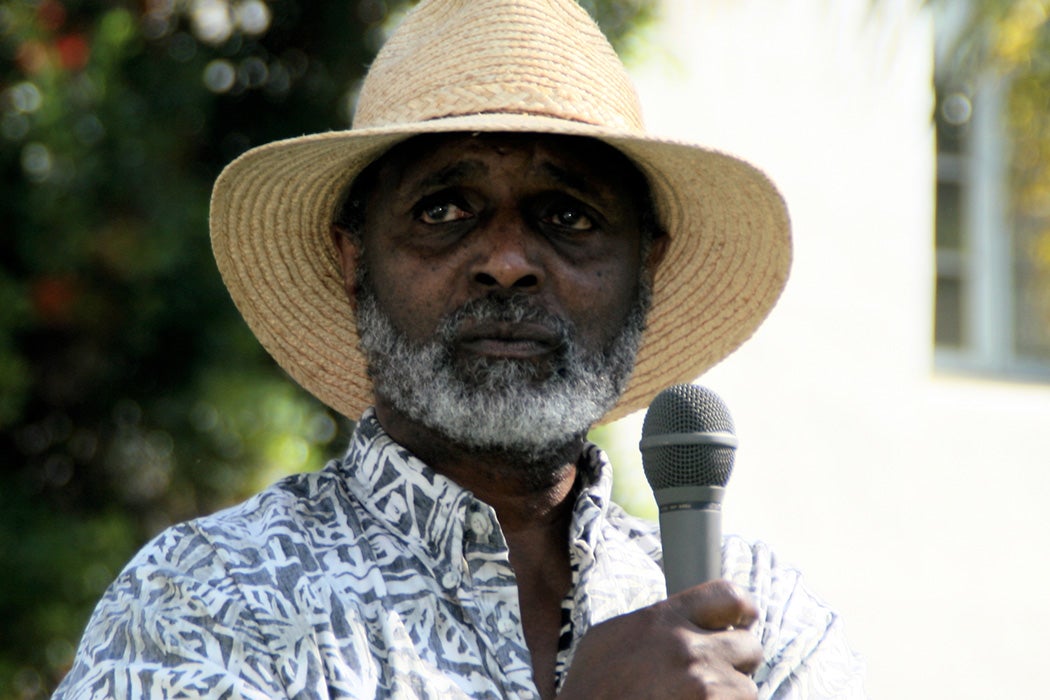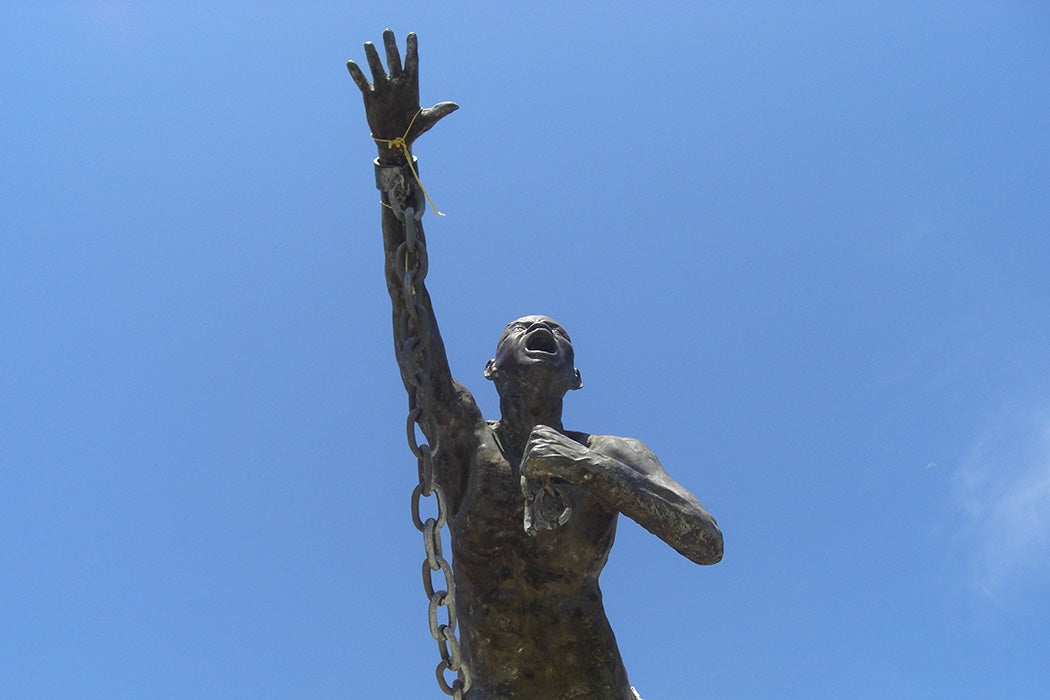The political scientist and Black studies scholar Cedric Robinson introduced the idea that the Black radical tradition emerged the moment a kidnapped African human being, forced to work on a plantation of the new world, refused to accept her lot. In this sense only, the birth of the transatlantic slave trade was the birth of the Black radical tradition. Later, that tradition would tie the colonized African with the descendant of the slave. Black radicalism could be found not only throughout the slave revolts, anti-imperialist uprisings, maroon barricades, and acts of sabotage by African enslaved human beings, but also in the writings and actions of the negritude movement, and in the activism of black radicals like CLR James, Claudia Jones, and W.E.B. Du Bois. All of them used the idioms and vocabulary of Marxism for inspiration.
Although Robinson was convinced that Marx had done well to expand upon African subjugation, he faulted Marx for not fully realizing that “cargoes of laborers also contained African cultures, critical mixes and admixtures of language and thought, of cosmology and metaphysics, of habits, beliefs, and morality.” In other words, African slaves were not just humans in bondage, but also bearers of African heritages, carrying with them the syncretises of native religions and versions of Christianity that were invented in their homelands.
Weekly Newsletter
Linguists have found that 200 words in the local creole Palenquero language in rural Colombia—home to the descendants of that country’s last surviving maroon community—originate in a Kikongo language called Yombe, still spoken in Congo. The Portuguese word for surviving maroon communities, Quilombo (Kimbundu, kilombo), is originally from Angola and refers to a male initiation camp for the military. The word that was previously used to refer to these communities, Mocambo (Kimbundu, mukambo), means “hideout.” Quilombos exist to the present day, and traces of Africa unquestionably persist in the Black diasporic cultures that resisted enslavement and oppression.
But if the Black radical tradition was born from the refusal to give in to assimilation—and stubborn resistance of the twin evils of colonialism and slavery—that should not lead to the mistaken belief that resistance is in Black people’s genes, Robinson argues. Take the Palenque in Colombia for example: while an international group of researchers from France, Colombia, London, and Iran hypothesized that, just as their oral traditions state, the Palenque indeed are related to the present day Yombe community in Congo, they also found that DNA data, “did not associate Palenque with any particular African group.”
Even though genetic evidence supported an oral historical story that the Palenque were descendants of slaves from Congo, there was no shared Congolese culture that bound the maroon communities together with the concept of “African.” Maroons came to see themselves as “African” and “Black” in ways that they would not have without the common experience of being in bondage by people who called themselves “white.” A pride in Africa—even a concept of it—was, in this sense, born in the Americas. In the so-called new world, many people who could have been on opposing sides of the battlefield in West Africa all bore the same chains. It is said that for some in Haiti, heaven was in Africa, and hell was eternal slavery. There is, in other words, nothing radical about being African; it’s not in our genes. But Africa became relevant when it was separated from its indigenous inhabitants.

In his magnum opus, Black Marxism (1983), Robinson took no shortcuts when, in the same chapter, he compared the African Maroon with the African Conquistador. He was trying to emphasize the contradictory roles that Black people often played in the new world. Although it is certainly true that the experience of the African in the new world has been associated with the Black slave trade, it also ought to be remembered that Africans were kidnapped and compelled to work the lands of the new world because of a European perception that their labor could replace the devastated native population. That was the initial thrust of the transatlantic slave trade, and that process, Robinson observed, needed a demarcation of skin that severely limited the route of Blacks to the ranks of conquerers.
Before this racial injunction, however, there were stories of Black slaves and freedmen who accompanied Spanish invaders and rose among the ranks of the conquistadors. The late historical geographer, Peter Gerhard, wrote a fascinating article that looks at the history of Juan Garrido, “an African who apparently crossed the Atlantic as a freeman” and “participated in the siege of Tenochtitlan” (the Aztec capital of Mexico). Garrido was one of the privileged Africans who had not come to replace natives, but who stood shoulder to shoulder with Spaniards to put them down instead. “I was present at all the invasions and conquests and pacifications which were carried out,” Garrido wrote, addressing his king in a letter.
The Africa- born Garrido joined in the conquests of Puerto Rico and Cuba, planted the first seeds of wheat in New Spain, and even led a gold mining expedition with his own Black and indigenous slaves before his retirement. Chile’s Juan Valiente, born in Africa and once a slave, became a captain in Juan de Valdivia’s conquest of Chile, and later was granted his own Encomienda (tributary estate) with native laborers. “Black conquistadors, by definition, fought alongside Spaniards against indigenous warriors,” writes Matthew Restall, chair of American Studies at Tulane University. “[I]t was by risking their lives, suffering in the field, protecting Spaniards, and killing natives that black men were able to improve their circumstances and, if enslaved, fight for their own freedom.”
Look, for example, at the Black Caribs, the ancestors of the Garifuna (the descendants of an Afro-indigenous population from the Caribbean island of St. Vincent) who can be found in Guatemala, Belize, and Nicaragua. Although their ancestors were a fighting people who were deported by the British to central America, they were born from the intermarriage between the Amerindian and African peoples of the island. One group faced annihilation; the other was forced to labor in intolerable conditions, at a time when there were very few restrictions on the planter and slave trader. Within the context of St. Vincent, Black Caribs were born because slaves and indigenous peoples not only entered into an alliance with one another, but needed to mix for their mutual survival in the face of the brutalities of the British.
Then there was the united federation of maroon towns, quilombos, that the Portuguese called “Palmares,” but whose inhabitants referred to as “Angola Janga” (Small Angola). Although its leadership and most of its residents were of Angolan descent, “by the second half of the seventeenth century, it was clearly a multiethnic and mostly creole community,” writes Robert Anderson, professor Emeritus of UNC-Chapel Hill. The population consisted of runaway slaves, slaves, free persons captured in raids, and a large contingent of indigenous American women. Palmares lasted for 150 years, deep in palm-based fortifications in the captaincy of Pernambuco, in colonial Brazil. Most of what we know about the maroon towns comes from the first-hand accounts of failed Dutch and Portuguese military campaigns to subdue the polity.
Palmares was surrounded with a double palisade, an extensive network of spies within Portuguese and Dutch territory that provided alerts for invasion attempts, and other “cunning pitfalls,” according to a Portuguese contemporary, which protected them from conquest. The Portuguese man reflected:
The town occupies a broad area; it is made up of more than 1,500 houses. There is among them a Minister of Justice for the necessary actions, and all of the trappings of any republic is found among them.
All of the people of Palmares answered to a Ganga-Zumba (Great Lord), who dwelled in a royal town. Smaller towns were controlled by commanders, whom the Portuguese named after, “Zambi, Andalaquituche, brother of Zambi, and Aqualtune, the mother of the king.” These gorups practiced their own form of Christianity and had a chapel with “a quite well-made statue of the infant Jesus, another of Our Lady of the Conception, and another of Saint Blaise,” but engaged in religious practices “without the form prescribed by the Church.” In Palmares, people of various ethnicities came to coexist in the face of the threat of conquest.
In other words, the Black radical tradition was African, often creole, but never automatic. It’s important to remember that just as there was no automatic kinship between Blacks and indigenous people (in Jamaica, some indigenous groups were hired to root out maroon communities), there was no automatic kinship within those groups either. Black radicalism was neither genetic, nor founded in any natural propensity for African affinity—that’s what Cedric Robinson taught us.
Support JSTOR Daily! Join our new membership program on Patreon today.







